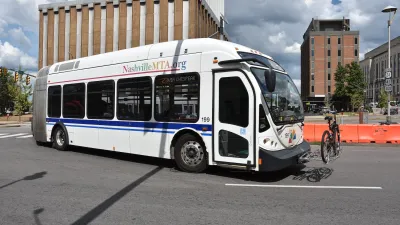Although they're not decision-making bodies, D.C.'s Advisory Neighborhood Committees (ANC’s) exert a powerful influence on the city's development process. David M. Schwarz Architects examine whether that's for better or for worse.
The District of Columbia Home Rule Act, Home Rule Charter, and subsequent rulemaking have given the ANC's “great weight” in D.C.'s decision making process, says David M. Schwarz Architects. "Architects know firsthand how this great weight applies to all matters before the Zoning Commission, Board of Zoning Adjustments, Office of Planning, Department of Transportation, Historic Preservation Review Board and other agencies through which we must marshal our projects."
With Washington D.C. facing several significant citywide policy debates (including a rewrite of the city's zoning regulations and potential changes to the Height Act), they call on the ANC's to raise their level of discussion and resist putting local parochial interests ahead of the city at large.
"ANC participation must be an accurate cross section of the entire community," the firm urges. "We should attend meetings regularly and contest any unsubstantiated claims by our commissioners or neighbors. Consider challenging incumbents, if they do not represent the views of the entire neighborhood. Commissioners must step up their game, as well. They ought to broaden their horizon and consider the entire city in addition to their immediate constituents, for they cannot truly meet the needs of their constituents without also considering the bigger picture. They must resist any extremist views from within the community calling for narrow-minded protectionism."
FULL STORY: HELPFUL OR HURTFUL: THE POWER OF ANCS IN DC DEVELOPMENT

Alabama: Trump Terminates Settlements for Black Communities Harmed By Raw Sewage
Trump deemed the landmark civil rights agreement “illegal DEI and environmental justice policy.”

Planetizen Federal Action Tracker
A weekly monitor of how Trump’s orders and actions are impacting planners and planning in America.

The 120 Year Old Tiny Home Villages That Sheltered San Francisco’s Earthquake Refugees
More than a century ago, San Francisco mobilized to house thousands of residents displaced by the 1906 earthquake. Could their strategy offer a model for the present?

In Both Crashes and Crime, Public Transportation is Far Safer than Driving
Contrary to popular assumptions, public transportation has far lower crash and crime rates than automobile travel. For safer communities, improve and encourage transit travel.

Report: Zoning Reforms Should Complement Nashville’s Ambitious Transit Plan
Without reform, restrictive zoning codes will limit the impact of the city’s planned transit expansion and could exclude some of the residents who depend on transit the most.

Judge Orders Release of Frozen IRA, IIJA Funding
The decision is a victory for environmental groups who charged that freezing funds for critical infrastructure and disaster response programs caused “real and irreparable harm” to communities.
Urban Design for Planners 1: Software Tools
This six-course series explores essential urban design concepts using open source software and equips planners with the tools they need to participate fully in the urban design process.
Planning for Universal Design
Learn the tools for implementing Universal Design in planning regulations.
Clanton & Associates, Inc.
Jessamine County Fiscal Court
Institute for Housing and Urban Development Studies (IHS)
City of Grandview
Harvard GSD Executive Education
Toledo-Lucas County Plan Commissions
Salt Lake City
NYU Wagner Graduate School of Public Service





























